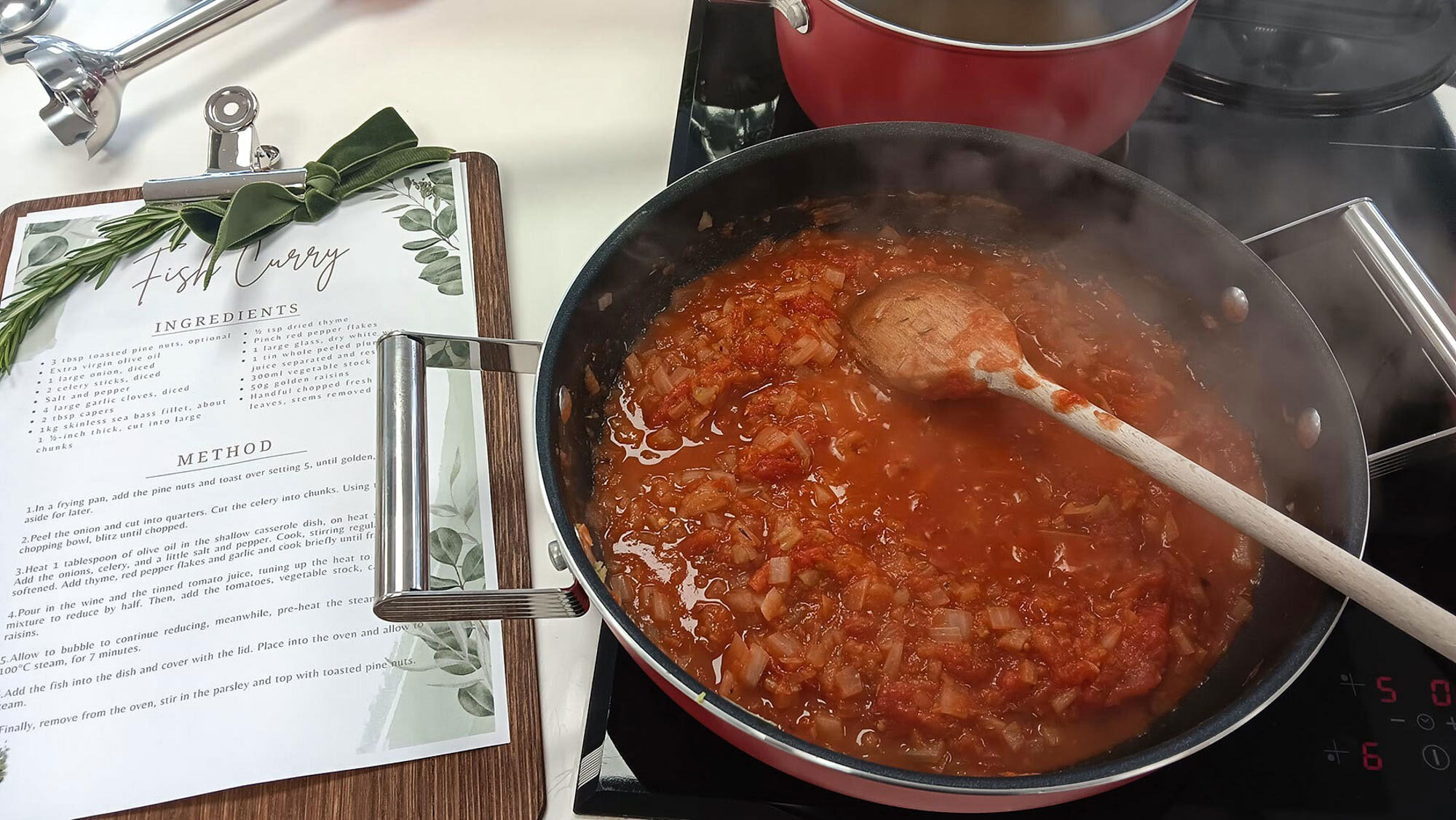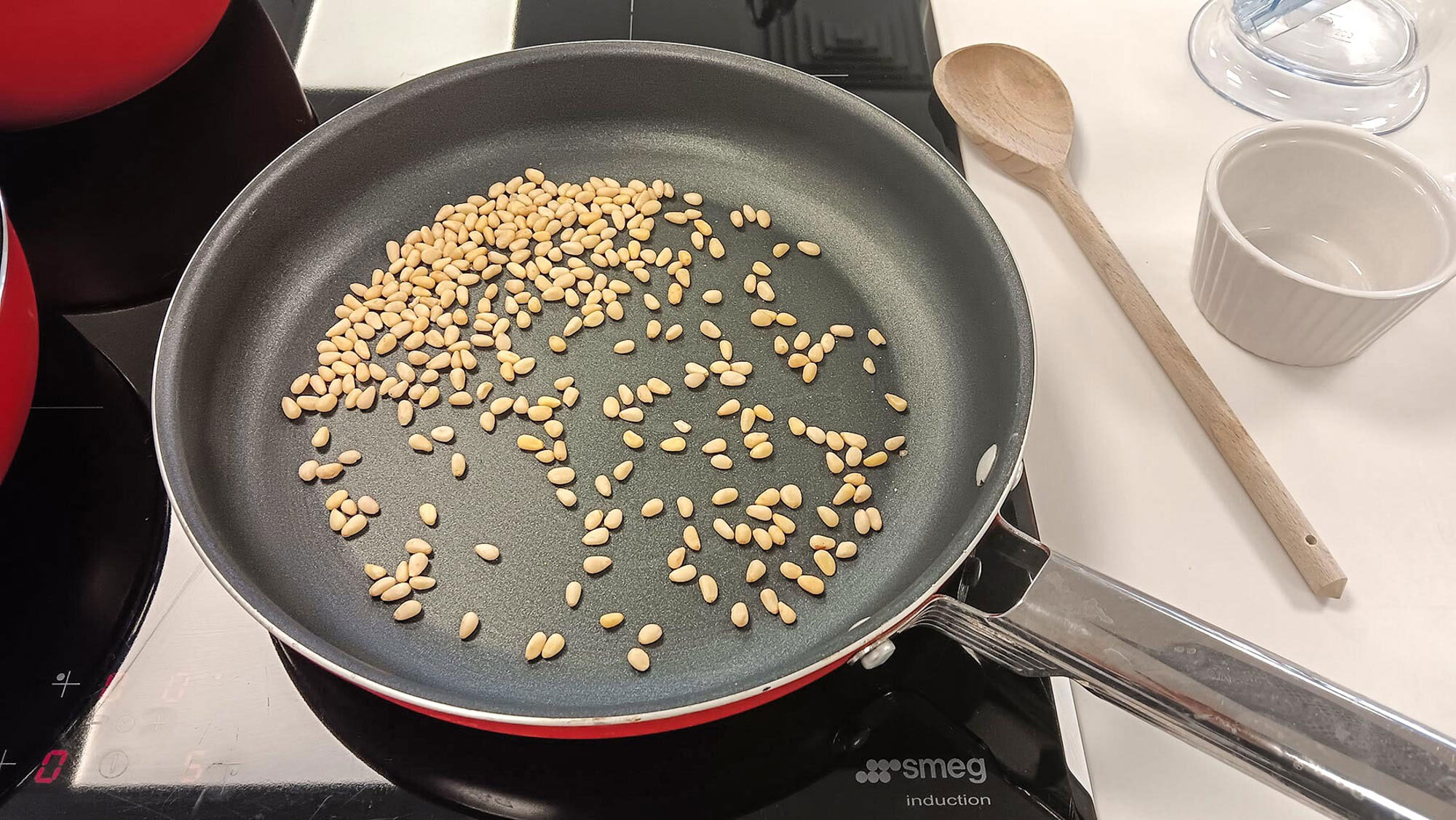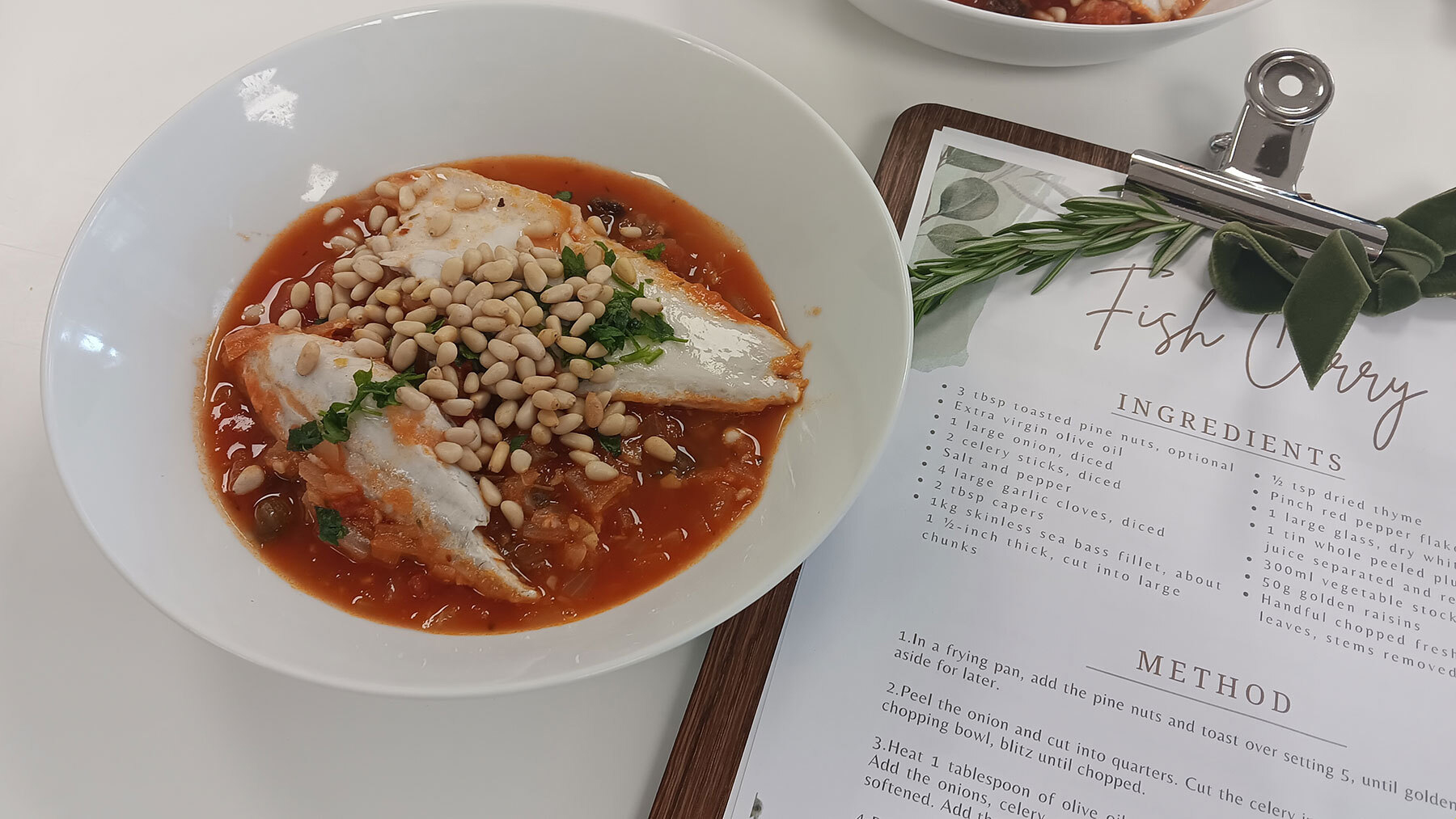I used an induction cooktop for the first time — here are 3 things I discovered
Is an induction cooktop as good as what it’s cooked up to be?

It's undeniable that induction cooktops are some of the smartest appliances you can buy for your kitchen. They're sleek, safe, and energy-efficient, but for those of us who have been working with an electric or gas stove for years, deciding to make the switch is a big commitment.
I’ve always used a gas range to fry, boil, and simmer food, but a recent trip to SMEG HQ gave me the opportunity to try out a market-leading induction cooktop for the first time. Although SMEG is known for making some of the best refrigerators, I was less familiar with their electric ranges and induction cooktops before this trip, so when I was set loose in the brand's test kitchen to make a meal from scratch, I got the chance to try all of their built-in appliances hands-on.
Having relied on my trust gas range for years, I was interested to discover how induction cooking would compare. Would it be intuitive, what results would it give, and would I prefer induction cooking to gas? To find out, I took up my station in SMEG’s kitchen and set to work making a sauce for a fish curry, using its Universal induction cooktop.
You might also be interested in reading I love my gas range but this portable induction cooktop might have converted me — here's 5 reasons why and induction vs gas cooktop: Which is best for you.
1. The temperature control takes some getting used to — but not long

Being familiar with a gas range, I was used to seeing the size of the flame to indicate whether the heat is high or low. However, with the induction cooktop, the balance between the settings was more difficult to judge without that visual clue. However, this is no different than getting used to using an electric stovetop.
I started by toasting some pine nuts in a pan and set the heat to a mid-range temperature, not wanting them to burn. There was certainly no chance of that as the heat was consistent and gentle, and if anything, I could have turned the heat up slightly. If I’d reverted to my gas stovetop, I know the pine nuts would have caught and burnt within a few seconds. I also felt safe leaving the pine nuts on the cooktop without having to stand over them, meaning I could get on with preparing the rest of the dish.
2. It's great for sauces

Having toasted the pine nuts without burning them, I moved on to frying onions and celery for the base of the curry sauce. I was getting hungry by this point! Again, the heat was consistent across the pan’s whole base, and I could fry them successfully without ending up with a charred mess. I also noticed how responsive it was when turning up or down the heat.
Sign up to get the BEST of Tom's Guide direct to your inbox.
Get instant access to breaking news, the hottest reviews, great deals and helpful tips.
After adding some herbs, spices, and seasoning, I poured in wine and tomatoes, sprinkled in capers and raisins, and allowed the sauce to bubble and reduce by half. At this point, I was particularly impressed with the induction heat, as I could leave the pan to simmer away on a very low heat without having to hover over it, just coming back to stir it occasionally. I wouldn't have been able to achieve this low heating setting on my gas range.
Although I was only using lower heat settings, induction cooking also offers a quick boil option. You should expect to boil a pint of water in one minute. And while it heats quickly it cools down rapidly, meaning you can avoid the issue of contents boiling over, if you manage to turn the heat down in time. Precision is a game changer — you can even melt chocolate within the base of a pan without the fear of it burning, which isn’t possible with gas without using a Bain Marie.
3. It's easy to clean and safe to use

My gas range is forever getting into a mess, although it’s probably partly down to the user! The heat is difficult to control, resulting in pasta or rice water constantly boiling over and leaving sludgy liquid on the base of the range and pan racks. I curse every time I have to clean it.
However, when using an induction cooktop, with more control over the heat, there is less likelihood of liquid boiling over. And when you do need to clean the cooktop, the flat glass surface is easy to wipe over. There are no awkward nooks and crannies or pan racks to clean.
Also, as the heat only gets hot under the pan, food splatters don’t burn onto the cooktop’s surface, like on a gas or radiant-electric cooktop. The induction cooktop simply needs a wipe with a damp cloth.
This element also makes it safe, as with no naked flame or hot plate to deal with, you can touch the surface of the cooktop without burning yourself. And if you have children in the house, there’s no danger of them burning themselves if they fiddle with the controls or touch the cooktop. Again, it's only the pans that will get hot.
However there can be few reasons why your induction cooktop may not be working, that are to do the pan type, size and whether they have residue on the base, which can interfere with the heat transfer.
Induction cooking — how does it work?
Unlike ceramic cooking zones, induction cooktops work based on direct contact with pans. Although it’s a very different concept to using a gas or traditional electric cooktop, the idea isn’t as far-fetched as it seems.
Induction cooking is based on magnetic fields, with each element on the cooktop generating a magnetic field. This induces heat onto the material in the base of the pan, which must be magnetic to work.
Clare Edwards, head of consumer & retails events at SMEG, explains, “The pot itself becomes the element that cooks the food. As a result, energy efficiency is maximised, and heat loss is minimized, since only the base of the pan is heated.”
For induction cooking to work, your pans must contain ferrous material in their base — cast iron and some types of stainless steel pans will work. You can check if your pans are suitable by seeing if a magnet attracts to the base. You might also be interested in reading Does an induction cooktop work with cast iron pans?
Plus, here are 5 things you need to know before buying an induction cooktop.
More from Tom's Guide

Camilla Sharman has worked in publishing and marketing for over 30 years and has covered a wide range of sectors within the business and consumer industries both as a feature, content, and freelance writer.
As a business journalist, Camilla has researched articles for many different sectors from the jewellery industry to finance and tech, charities, and the arts. Whatever she’s covered, she enjoys delving deep and learning the ins and out of different topics, then conveying her research within engaging content that informs the reader. In her spare time, when she’s not in her kitchen experimenting with a new recipe, you’ll find her keeping fit at the gym. In the pool, stretching at a yoga class, or on a spin bike, exercise is her escape time. She also loves the great outdoors and if she’s not pottering about in her garden, she’ll be jumping on her bike for a gentle cycle ride.
-
Wolfshadw I've been using an induction cook top for years. About the only complaint I have is that it seems to take a lot longer to boil a large pot of water (for pasta). However, for pan-frying or sauteing, or even just heating up a bowl of soup, it works very well.Reply
-Wolf sends -
John Fox It's always amazed me at the number of people who don't know how to use a gas range. I make rice, in a pan, on a gas range and NEVER hover. Why? I use the same device my grandmother used called a simmer plate. It goes over the burner and reduces the heat to a simmer gentle enough for the most finicky of sauces. I've never tried to melt chocolate, because that's what a microwave is for.Reply
Most people have low end gas ranges, it's not fair to compare them to a high end induction. And if one can use a 12 inch iron skillet or soup pot on it, it's not a low end induction range. While one can put a 12 inch pan on a nine inch induction burner, it does not heat up the entire bottom of the pan and leads to cold areas. Those nice induction ranges require high amperage circuits, often needing rewiring if replacing an electric range, and can cost over 5,000 dollars.
I bought an induction burner to try out. Both my wife and I agreed we didn't like it. Couldn't use our big pans on it, and it still got messy when frying, we didn't see any advantage at all other than boiling water faster.
And if we need it that fast, we'll use our electric kettle, which is specifically designed to boil water and shut off when done. Other wise, we just plan our cooking time accordingly. Like chefs have done for ages...
